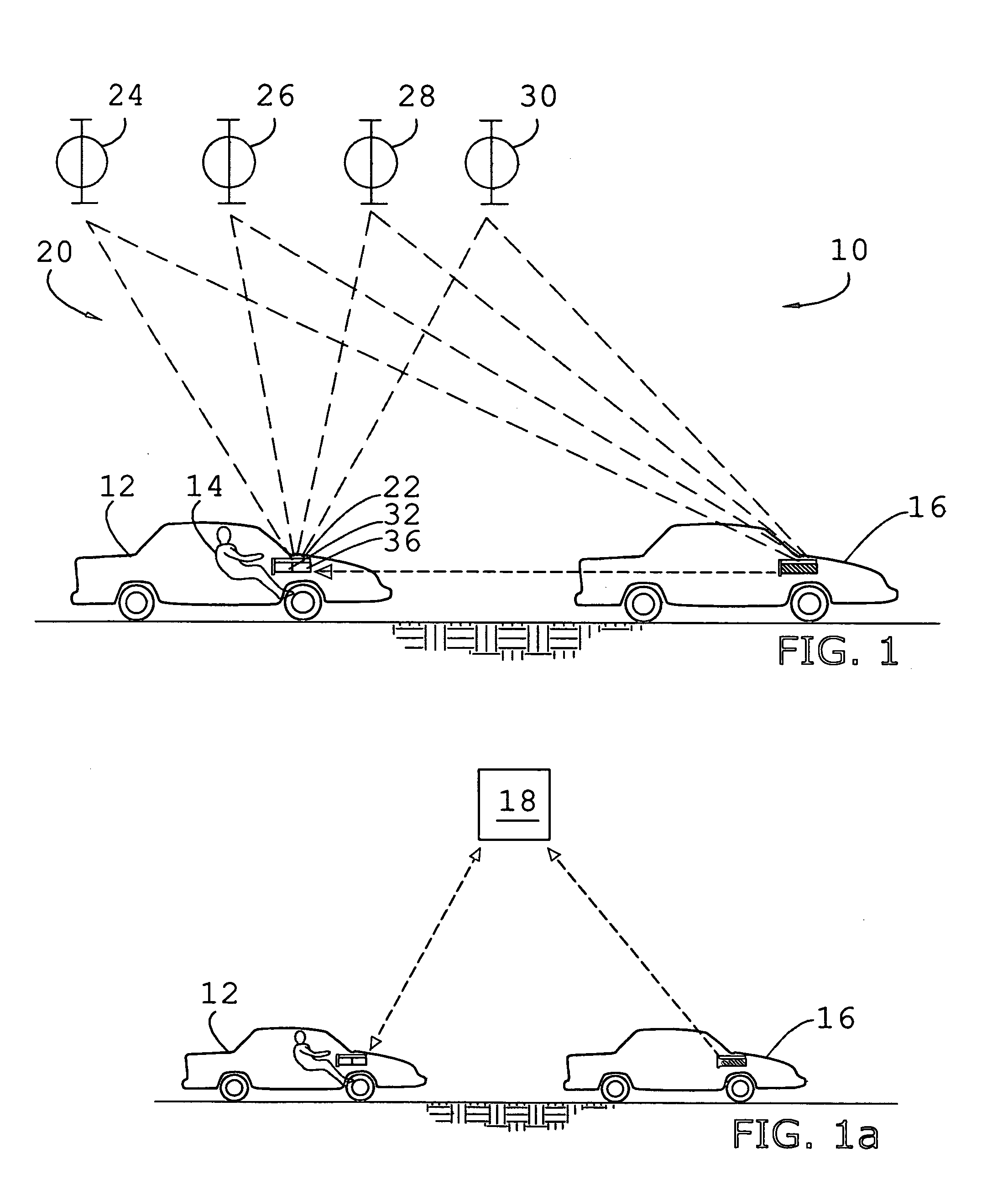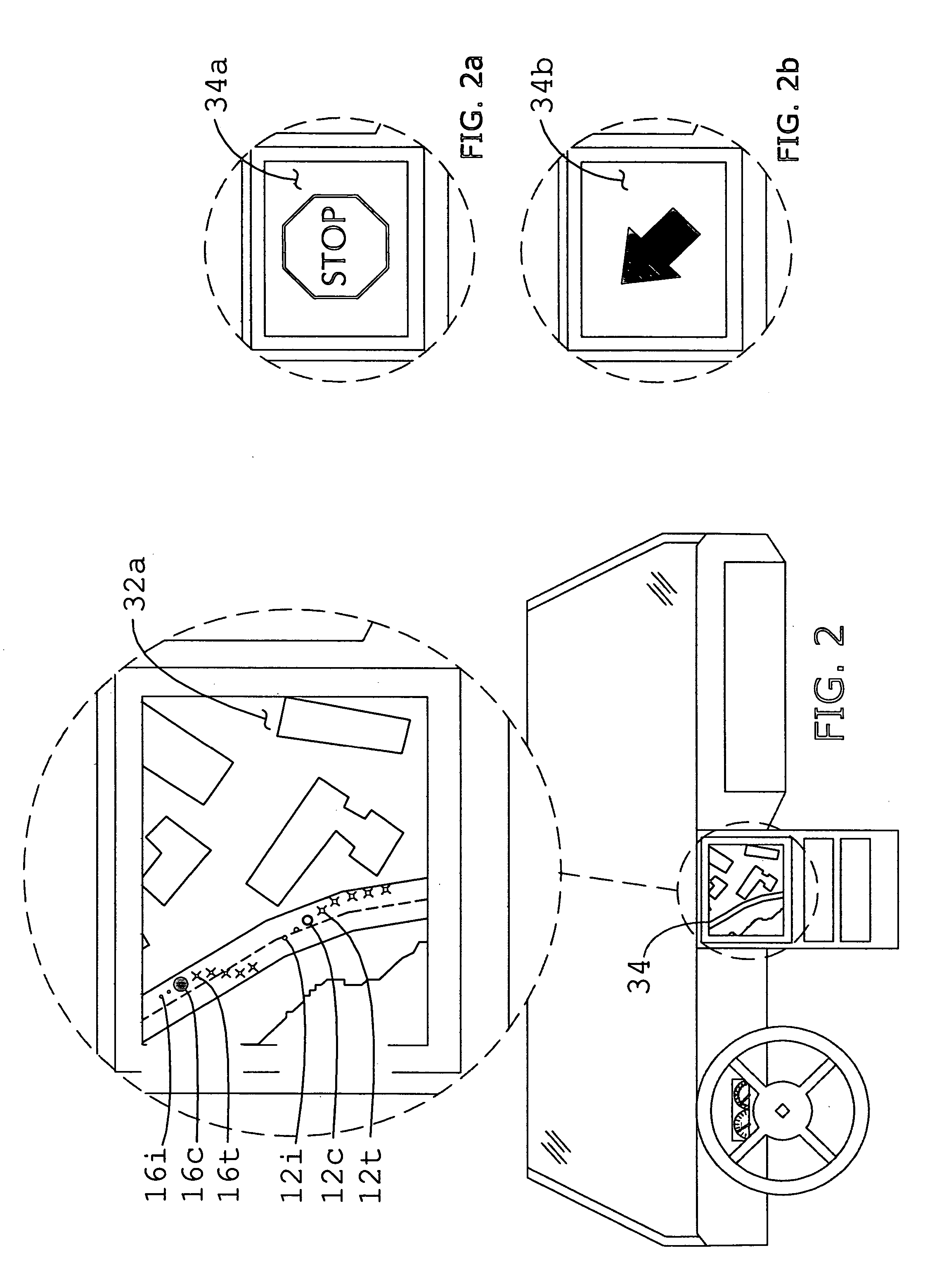System for and method of detecting a collision and predicting a vehicle path
a collision detection and vehicle path technology, applied in the field of collision avoidance systems, can solve the problems of increasing the total product and repair cost affecting the safety of the host vehicle, so as to increase the efficiency of the collision control system and achieve greater range and function.
- Summary
- Abstract
- Description
- Claims
- Application Information
AI Technical Summary
Benefits of technology
Problems solved by technology
Method used
Image
Examples
Embodiment Construction
[0026] As shown in FIG. 1, the present invention concerns an improved collision control and path prediction system 10 adapted for use with a host vehicle 12 and by an operator 14. The system 10 is illustrated and described herein with respect to vehicles, such as cars, SUV's, trucks, etc. However, it may also be utilized with aircrafts, watercrafts, human motility, or other modes of transportation where projected path prediction or collision avoidance is desired. The system 10 is configured to determine a plurality of trail coordinates 12t, a current position coordinate 12c, and a plurality of immediate dynamic path (“IDP”) coordinates 12i, for the host vehicle 12, and a similar set of coordinates 16t,16c,16i for at least one remote vehicle 16 (see, FIG. 2). Except where a plurality is necessary for discussion, the present invention shall hereinafter be described with respect to a remote vehicle 16, with the understanding that the inventive aspects of the invention may be concurrent...
PUM
 Login to View More
Login to View More Abstract
Description
Claims
Application Information
 Login to View More
Login to View More - R&D
- Intellectual Property
- Life Sciences
- Materials
- Tech Scout
- Unparalleled Data Quality
- Higher Quality Content
- 60% Fewer Hallucinations
Browse by: Latest US Patents, China's latest patents, Technical Efficacy Thesaurus, Application Domain, Technology Topic, Popular Technical Reports.
© 2025 PatSnap. All rights reserved.Legal|Privacy policy|Modern Slavery Act Transparency Statement|Sitemap|About US| Contact US: help@patsnap.com



